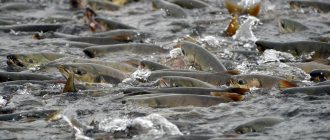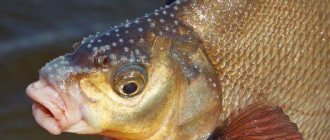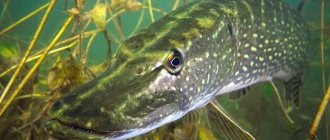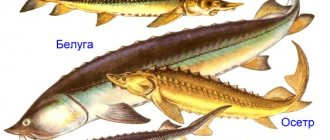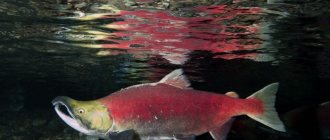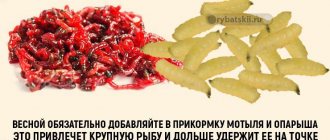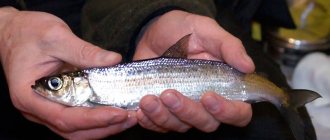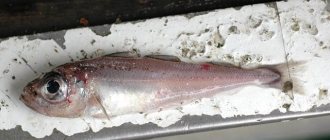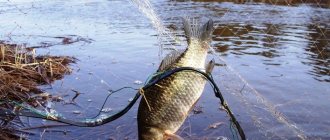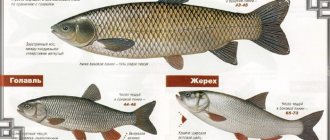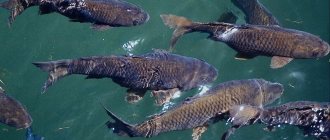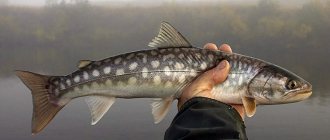When does salmon spawning begin?
This question cannot be answered unambiguously. Spawning can vary in time and depends on the type of fish, as well as on temperature conditions. For some fish (for example, sockeye salmon) to spawn, the water temperature needs to reach 5-7°C, for other species (chum salmon, pink salmon) it is necessary for the temperature to reach 12-15°C. Sockeye salmon is the first to spawn, then pink salmon and chum salmon, and later Chinook salmon and others.
Read: Fishes of the salmon family
How does a fish choose its place?
To reproduce, fish most often go to spawn in those streams where they themselves were born. How she finds the route to get to her birthplace remains a mystery to scientists. Spawning occurs in fast rivers with cool water and rocky bottom. The places where salmon lay their eggs have low water levels. It does not exceed 100 cm, and more often it is much lower. Sometimes you can see fish spawning while barely covered by water. In some places they even have to run aground and spawn while lying on their sides.
The most suitable for breeding are streams with rapids, where there is a current of medium strength and the water is enriched with oxygen. The female chooses a section of the bottom that is relatively safe in her opinion, clears it of debris and digs holes with her tail into which she lays eggs. The male fertilizes the clutch. The pebbles in the laying areas should be small so that the fish can move them with their tail. Sometimes natural depressions in the ground or even long holes several tens of meters long are chosen as a spawning site. Often the laying is done near springs gushing from the bottom.
Who prevents salmon from spawning?
During spawning, salmon completely stops feeding and lives only off the fat reserves that it managed to accumulate during its life in the ocean. A starvation diet weakens the fish, so salmon often become easy prey for birds, animals and even humans. By the time the salmon spawning is over and the eggs are already in the ground, the salmon enter the river. This is salmon that goes to spawn with the onset of autumn. At this time, there is a struggle for space in the river, although the salmon no longer spawn, but only protect their eggs.
Salmon in medicine and cosmetology
Salmon is sometimes called "fish for the mind." Omega-3 fatty acids contained in salmon meat, in addition to lowering cholesterol, reducing the risk of cardiovascular disease, also increase IQ (intelligence quotient).
Eating salmon reduces the risk of malignant neoplasms, strokes, arthritis, diabetes and Alzheimer's disease, normalizes the functioning of the brain, heart and kidneys, and prevents the formation of atherosclerotic plaques in blood vessels. The potassium and calcium contained in salmon help strengthen the musculoskeletal system.
Salmon caviar and salmon oil (fish oil) are used in the cosmetics industry to produce anti-aging and nourishing products for face, hair and body care.
Contraindications
Despite all its beneficial properties, salmon is not recommended for pregnant women and nursing mothers. The fact is that the meat of some types of fish of this family may contain mercury. Its tiny amount does not have a negative effect on the body of an adult, but it can seriously harm newborns and embryos.
Due to the fact that salmon is considered a fatty fish, this product should not be abused by people who suffer from chronic diseases of the stomach, liver or intestines, as well as obesity.
July on the Kola Peninsula is a time when you can forget that this is the Arctic and the harsh northern region. Perhaps, only the polar day and the “beloved” mosquitoes will not let you forget about this. At this time they wake up and begin the most active stage of their lives. If you do not properly prepare for this, then you will have no time for observing animals and nature - you will be the object of constant attack by these evil and annoying creatures. However, they occupy their niche in the natural balance, being an integral part of the food chain that nature has been building for thousands of years.
Water ripples are refracted by the sun's rays and reflected on the salmon's body - a sight that can only be seen in real life by an underwater photographer.
So, the main spring run of large salmon has ended, and the larger, more nimble, fast and nimble Tinda (young salmon) rushed into the river. This fish, unlike large ones, never skimps on jumping —
it shows its presence much more often than large salmon. With the departure of the Tinda herd, the river comes to life again, and a new quality of relationships appears in the salmon community.
July, time of low water on the Rynda - the famous salmon river of the Kola Peninsula.
This time the fish did not overcome the waterfall, it flies down to settle down and accumulate strength for the next jump.
How do salmon choose their places?
The redistribution of territories begins, the selection of places for future spawning, and the preliminary selection of partners. It is difficult to fully describe what is happening in the river. One day, our scientists tagged several individuals that entered the river with radio beacons and monitored their movements using radar throughout the summer. I can say one thing - no pattern has been established in the movement of fish through spawning areas. Almost all individuals, before choosing a spawning site, walked around all acceptable spawning grounds on the river for several kilometers. Moreover, they were not lazy to pass high waterfalls down and upstream, which any salmon has to expend a decent amount of their energy to overcome. Salmon that enter the river to spawn do not feed until they roll back into the sea. She spends about a year in the river, and in autumn
spends more than a year and a half in the river - and all this time lives off the calories accumulated in the sea. Surprisingly, this is true!
The most remote salmon rivers can only be reached by helicopter.
This is clearly not the first time this skinny female has passed through this waterfall.
How salmon changes in the river
As salmon continue to be in fresh water, changes begin to occur in their bodies. The color of the scales changes: it first becomes dull, becomes less shiny, and then acquires a purple tint. Then, in males, the shape of the head begins to change significantly: it becomes larger in size in relation to the proportions of the body. The head begins to elongate, and a fang grows on the lower jaw. In females, the abdomen increases in size; otherwise, changes in body shape are not as significant as in males.
At the same time, the process of maturation of eggs in females and milt in males occurs. In fish that have just come from the sea, the eggs and milk are in an undeveloped state. They mature and increase in size as the salmon prepares for spawning. Further, the body color of males changes beyond recognition: it becomes yellow-brown with red spots, and the silver color completely disappears from the scales. In females, the silvery tint to the scales is somewhat retained, but a violet-brown tint begins to predominate in its color. The shape of the head in females changes slightly.
This is what a female salmon looks like five weeks after entering the river from the sea.
A large male in breeding plumage, ready to spawn.
Spawning grounds vary
From the beginning of September, spawning groups are formed and occupy specific places. Some of the best places for spawning are the drainage reaches, where the weak current accelerates and turns into rapids. The bottom in such places should consist of small pebbles in which salmon can dig their spawning grooves in order to lay their eggs. All places with a medium current, where the water is well enriched with oxygen, are suitable for spawning. In addition to visible spawning grounds, salmon can also lay eggs near springs gushing from the bottom of reaches and passing lakes. Spawning grounds can be part of a specific hole or reach with a small area. Some pits several hundred meters long can be one continuous spawning ground.
The female is ready for spawning - the shape of the abdomen shows that the eggs are already ripe.
In this fish it is difficult to recognize the “silver beauty”, which just three months ago came here completely different.
Who stops salmon from spawning?
Most individuals join their spawning group by mid-September and are actively preparing for spawning. At this time, the struggle for the best places and females does not stop. This struggle can be brought to life by the fall
(salmon that enters rivers in the fall). When the silver fish comes to the spawning pit, which has been living its own life for a long time, a real confrontation begins. It often results in a series of jumps and splashes. Moreover, both the autumn and the fish standing in the river jump. It is difficult to say what they share among themselves, because at this moment they have completely different goals and intentions. However, salmon ready for spawning at the moment of sunset becomes very aggressive and shows this in every possible way with its behavior. All these underwater dramas do not stop until the very moment the eggs are laid.
My story about the spawning period concerns more of the rivers of the northern part of the Kola Peninsula. In its southern part, on the Tersky Coast, everything is happening about the same, but a couple of weeks later.
Below the surface, salmon prepare to leap.
The Rynda River in the Murmansk region a month before salmon spawning
From whom should we protect the caviar?
Osenka
with its entries and movements it will irritate the spawning individuals throughout the entire spawning period - nothing can be done about it, this is how nature works. There are often fewer females in the river than males, so several males usually hang around each female. During the spawning process itself, males dig grooves in the pebbles with their beaks. Females lay eggs there, which are immediately watered with the milk of males. The process of fertilization and the process of burying eggs in the pebbles occurs simultaneously - the males do this by flapping their tails.
Not all eggs stick and get stuck in small pebbles. Some of them are carried away by the current, where lovers of food are already waiting for them. In the northern rivers, such gourmets are most often brown trout and whitefish, on the rivers of the Tersky Bank - grayling and brown trout. These vultures are even ready to invade spawning grounds and eat properly laid and fertilized eggs. Salmon have to constantly drive away these annoying gourmets from their spawning grounds. Fortunately, she surpasses them in size, speed and strength.
Caviar ready for artificial insemination at a fish hatchery
Finding and photographing salmon fry after the ice melts on the salmon river requires some effort.
How do the fry live and survive?
After the process of laying eggs is completed, the salmon continues to guard it until the fry hatch. These fry will live in the river for more than two years, and then go to sea to someday return here, to their native river, to fulfill their mission.
Salmon fry are very voracious and eat everything they can eat. During their life in the river, they live and feed in the same way as brown trout. They even look very similar to small trout - only a specialist can distinguish them. At the beginning of their lives, they feed on aquatic microorganisms, and then move on to insect larvae living in the water. In the summer months, grown-up salmon feed on insects that land on the surface of the water. This can be observed during mass flights of insects.
Growing salmon have many enemies. These can be birds feeding on fish, mink, pike, brown trout, grayling - many want to eat it. Semuzhat survive due to their massive numbers, agility, survivability and speed. The salmon itself, unlike brown trout, does not eat its fry. Nature provided for this by making sure that the salmon did not feed at all during its stay in the river. The salmon stock in the Murmansk rivers is greatly supported by the breeding of fry in fish hatcheries. Producers are taken from wild individuals caught in rivers, caviar and milt are selected from them. Next, the eggs are artificially fertilized and the fry are raised for two years. The raised fry are released into the rivers to swim freely.
This is what one-year-old salmon fry look like
This salmon fry is two years old - it will grow a little more and go to sea!
After spawning back to sea
But let's return to spawning in natural conditions. Salmon that spawns in the fall, after spending the entire winter in the river, again changes its appearance and color. In cold water under the ice, its scales become silver again. The shape of the head in males takes on its previous appearance. The body of males and females becomes more elongated, thinner, with a sunken abdomen. Local residents call these fish “walchak” or “kelt”. Nevertheless, this fish continues to remain quite strong. It begins to roll back into the sea when the first spring salmon enters the river and begins to displace it from the river. Not all salmon survive returning to the sea. Some of them are eaten by seals and killer whales, which guard the salmon coming from the sea at the mouth of salmon rivers. Fish that roll down from the river and become weak after a year of starvation become easy prey for them. During their stay in the river, some individuals undergo irreversible processes of drying out of the stomach and internal organs - they simply die. However, salmon is called noble salmon because after spawning the majority survives, and then after a certain period of time returns to its river.
The stonefly larva is one of the food items for growing salmon fry
And this is what the stonefly itself looks like - the first insect to show activity after a long polar winter
The salmon river awakens after hibernation
The voracious cormorant participates with excessive zeal in the natural selection of growing salmon.
How fry appear and survive
Red fish eggs mature slowly. Only after a month does the shell of the eggs of the fry break open, breaking out. Sometimes the process of ripening caviar is delayed for a longer period. The females guard the clutch all this time. After hatching, the fry begin to feed in the river and live in it for 2 years. Only then do they leave their location and head out to sea. At first, the fry eat microscopic algae, then move on to beetle larvae. In summer, they deftly catch insects from the surface of the water.
Growing young animals have many natural enemies. Their small size makes the fish vulnerable to attack by predators. The fry survives only due to agility, speed and mass production.
Why do fish die after spawning?
Salmon do not always die immediately after spawning. There are species that spawn 2-3 times during their lives. These are kunja, malma, and Sakhalin taimen. These fish of the salmon family, after laying eggs, return to the sea, continue to feed, and with the arrival of spring they again make a long journey to the upper reaches of the rivers.

But there are also species that die immediately after spawning. There are several versions about the causes of death. One of them says that the parents deplete their reserves of nutrients during laying eggs and they do not have enough strength to return to their permanent habitats. According to the second version, their life cycle is designed so that death naturally occurs after the eggs are laid. But the death of the fish is not in vain. Decaying bodies provoke an outbreak of microorganisms in the water, which will serve as food for the growing fry.
Cause of intoxication
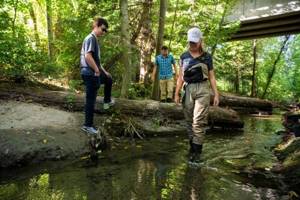
Recently, a scientific journal published an article that stated that the mass mortality of salmon was caused by car tires. Scientists came to this conclusion after discovering a substance code-named 6PPD in water. It is added to rubber by tire manufacturers to improve their performance. In water it turned into 6PPD-quinone, which is lethal to fish.
Astrologers gave advice for the January new moon, which will occur on the 12th
The 2021 Nissan Kicks starts at $20,595 for the base S trim.
Astrologers explained why January 11 will be a good day for everyone
Toxic pesticides, heavy metals and other dangerous compounds were also found in the water, which, combined with low oxygen levels in the water, led to a sharp decline in the salmon population.
The value of salmon caviar
Large bright eggs of rich orange color have a large supply of nutrients. Some species of fish even specifically hunt for salmon eggs. Eggs contain a large amount of protein, valuable fats, healthy acids and microelements. Due to this composition and high calorie content, this product is recommended for increasing immunity and restoring the vitality of people weakened by illness.
It is recommended for healthy people to consume salmon caviar on an ongoing basis. This product is a familiar delicacy to many. But a single intake of salmon caviar should not exceed 5 tsp.
